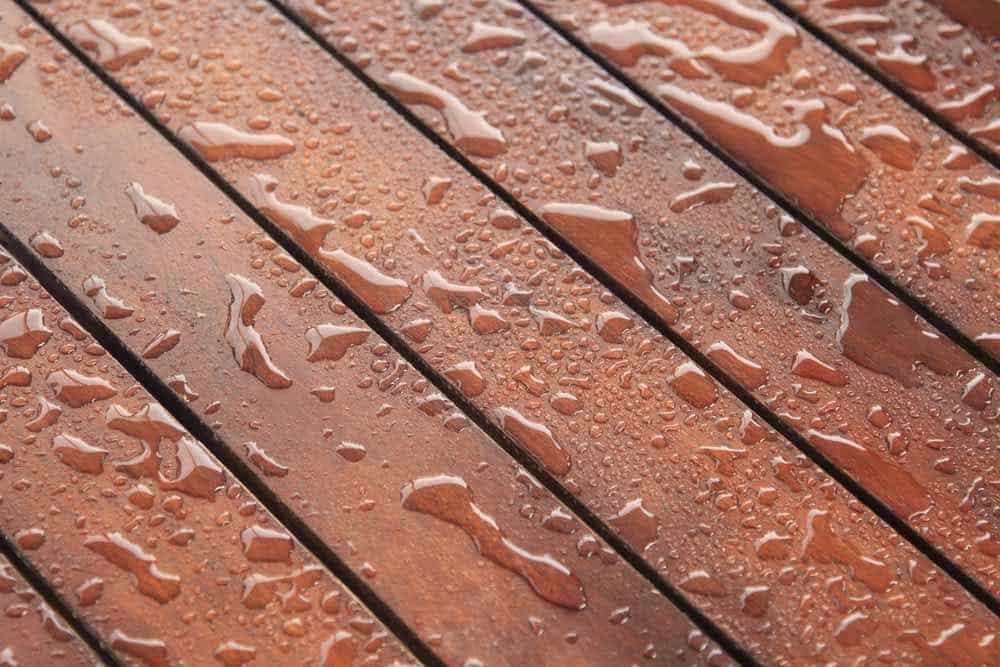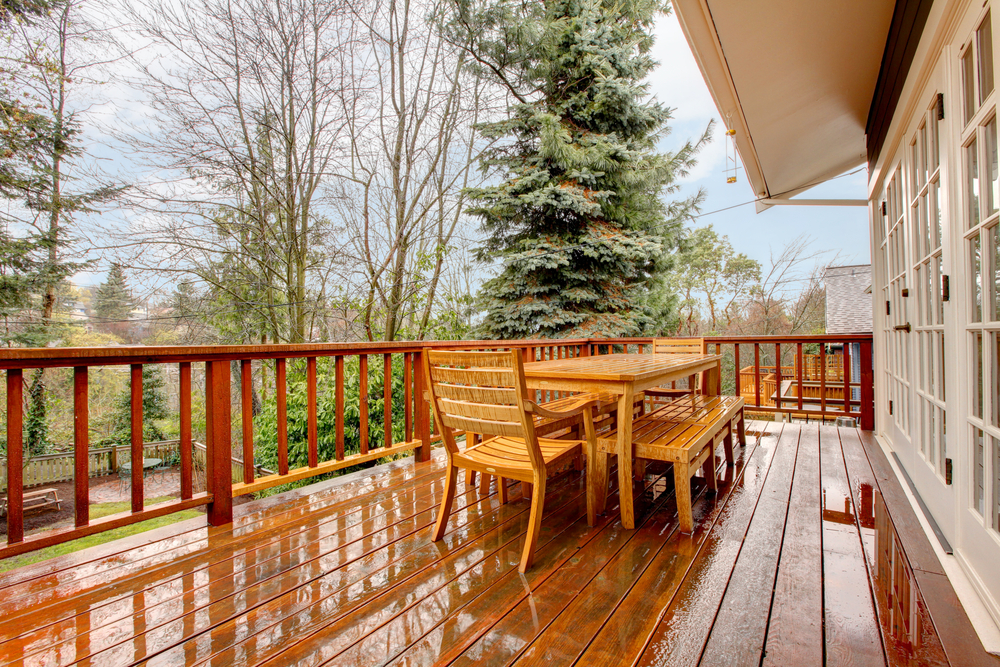
During the winter months, as well as during our rainy seasons, the outside of your home, including the deck, can be susceptible to damage when it is not protected correctly. It is also helpful to have a covered deck that can protect the wood from the rain and other severe weather. By using the best product for deck protection, you prevent that weathering, and you are protecting your wood deck both from UV rays and other types of harsh weather. Protecting is essential in the later months of the year when rain and snow are common and may have an adverse effect on your deck.
For instance, if you have wet leaves that are collecting on the deck, this could let water soak through into the wood. Staining your deck keeps water from permeating your wood and causing rot to occur to your deck.
Be sure to choose cleaners that protect the decks wood by eliminating staining. If you decide to strip the deck, you will have a new surface for the stain. Regardless of the choice, good deck staining creates a clean, bright look in the spring. A stain does more than just make your deck attractive; it also acts as a protective barrier against the elements.
A quality stain designed for decks can do much to help keep them safe from the threats weather brings. There are several different types of high-quality stains available to help your deck resist damage caused by sun and rain. One of the ways you can keep elements such as sun and rain away from your deck is by staining and sealing it using products designed to be protective. If you would like some deck sealing assistance, you can use our eco-friendly, long-lasting wood sealer to keep your wood deck protected from the elements.
The best preventative action you can take to safeguard your wood deck is using wood sealants. If your deck is adequately protected from structural issues, you will want to seal your wood effectively to keep it from wearing down every day. Keeping the wood clean and crisp year-round is the best method for protecting your deck. What sealant or protective cladding does is keep any moisture out of the wood, which could cause splitting, cracking, or warping. Because if you skip over certain areas when covering your deck with sealant or protective finish, then you are going to either create discoloration or you are going to have weakened spots in the deck.

Moisture trapped between your sealant and the deck will result in rot, discoloration, or mildew in your deck. In winter, the mud gives snow and ice the best chance to accumulate and seal in the moisture, and humidity is not good for your deck; it causes rotting of the wood, as well as other structural and component damage. Leaves, twigs, and other trash can become soggy fast that they can form a layer of mulch that, left unchecked, can do your deck harm.
All this dirt and smears not only degrade the look of your deck, they also degrade. Some materials will stain if left on, which is why a key element to protecting an outdoor deck is sweeping regularly. Make sure to use Ready Seal Stain & Sealant, which provides great outdoor deck protection by keeping the rain and snow from sopping up on the deck.
In lieu of the combined stain-and-seal product, you can simply apply stain to the deck, then, 48 hours later, apply sealant to achieve similar levels of protection. Sealant, stain, and paint can all be applied to the deck to varying degrees of protection. Paint, whether it is latex or oil-based, may be protective from UV damage as well as moisture, but better-quality deck paint typically does not last as long as sealing or stain.
Applying sealant to a wet or freezing deck results, at best, in a patchy, irregular seal which cannot effectively protect the deck. Snow, rain, and high winds can do tremendous damage to your house and deck, no matter how well you have protected it with sealant, wax, and various finishes. That is why oiling deck is essential that keep wood safe from harmful weather conditions.
While sealing agents are usually dry to the touch in just a couple of hours, to get the proper seal to protect your wood, leave your deck untouched for two whole days. You cannot stain a damp deck, and you should not stain a deck right before a rainstorm, so you are going to have to find a good window of time where the deck is dry, and your new stain has plenty of time to cure. Once you clean and wash the deck, allow the deck to dry out for one or two days. After you have cleared out the items, decorations, and furniture on your deck, you are probably going to want a heavy-duty power wash. A power wash will get rid of any remaining surface debris and will reach deeper into the wood to get rid of mud and stains.
After taking proper safety precautions, you will find power-washing will be able to wash your deck beautifully and leave it looking fantastic. A good deck cleaning solution will eliminate mildew and mold, along with mud and stains. You should either power wash the deck, or wash the deck thoroughly with a wood cleaning product, a couple days prior to staining to make sure you get a clean, consistent coat.
If you have stains on the deck that are sticking around, use a few specialty, bleach-free cleaners that do not bleed through wood. Another aspect of the wet weather and wooden decks is choosing appropriate deck stains and applying them regularly in later parts of the year during deck restoration projects, when rain is not as persistent.






